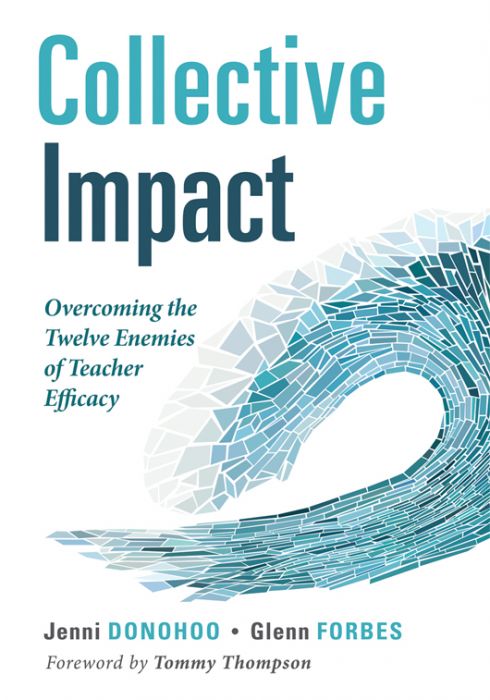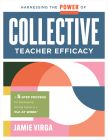
Collective Impact
Overcoming the Twelve Enemies of Teacher Efficacy
Explore the four key sources of collective teacher efficacy: mastery experiences, vicarious experiences, persuasion, and positive emotions. Understand how to tap into these sources to overcome the barriers that impede the development of collective teacher efficacy. With a focus on sustained improvement, this guide provides practical steps to achieve lasting impact.
Discover the enemies of efficacy
In Collective Impact, authors Jenni Donohoo and Glenn Forbes identify barriers that impede collective teacher efficacy and detail effective strategies school leaders can use to overcome these obstacles. With reflective prompts and tools for implementation, this book will help school leaders in developing the capability to lead successful and sustainable improvement and realize more positive outcomes for students.
K–12 teachers and leaders can use this book to:
- Reframe deficit thinking to recognize opportunities and to embrace challenges
- Foster the belief that everyone in an educational setting has the individual and collective capability to impact positive outcomes
- Create a collaborative culture that promotes innovation and teamwork
- Build strong, supportive teams in which everyone can grow and contribute professionally
- Establish mutual goals and visions to guide committed teams toward collective efficacy and collective impact
Related Topics
Additional Information
“Collective efficacy is among the most powerful influences on student learning, but also one of the hardest to implement; but Donohoo and Forbes do not shy away from the hard work. They identify the enablers and enemies of efficacy, the micro-moves to overcome these challenges, and a theory of action—all backed by research-based strategies to build collective efficacy in your school. Collective Impact is essential reading for anyone committed to transforming education through the power of collective teacher efficacy.”
“Collective Impact provides a clear path for building collective efficacy in our schools. While many educators are familiar with the research around how collective efficacy leads to increased student achievement, what’s new here is an honest conversation about the barriers that get in the way of this important work. By clearly naming the twelve enemies of efficacy and providing strategies for overcoming them, the authors create a concrete and research-based vision of how schools rally around the belief that they can (and will) meet the needs of all students.”
“You won’t find a book that has more key ideas and guided solutions for pressing education issues than Collective Impact. Donohoo and Forbes set out twelve pairs of action choices that represent a map for turning your organization into a high-powered system. Use this book as a macro solution to examine all twelve twinned elements, or select any two or three pairs and work on them as a set. This book contains a goldmine of factors you can use to focus clearly and effectively on continuous efficacy.”
“Micro-moves: that’s it! School leaders don’t have time for complex multi-step processes that don't yield significant results. Donohoo and Forbes have curated the micro-moves needed for successful school leadership, all within a strong research-based frame. Prospective and current school leaders will keep this book on the corner of their desk.”
“We know through our research that cultivating collective efficacy isn’t something to leave to chance. Collective Impact uncovers twelve enemies of efficacy and provides practical strategies to overcome them, empowering leaders and strengthening teams. This book is an invaluable resource for anyone looking to build a thriving workforce, boost team performance, and drive better outcomes for students.”
“The challenge of collective efficacy has always been reducing the variation in efficacy beliefs among teachers in the same school. In this book, Jenni and Glen describe some of the major reasons for that variation and offer practical suggestions on how to reduce it.”
“This is a book that cuts through the cliches about collaboration. It confronts the enemies of collective efficacy and maps out the micro-moves that educators can use to defeat them. Donohoo and Forbes superbly show exactly what can be done to make collective efficacy a reality that can triumph even when the odds are stacked against it. Pick it up. Don’t put it down. I didn’t.”




